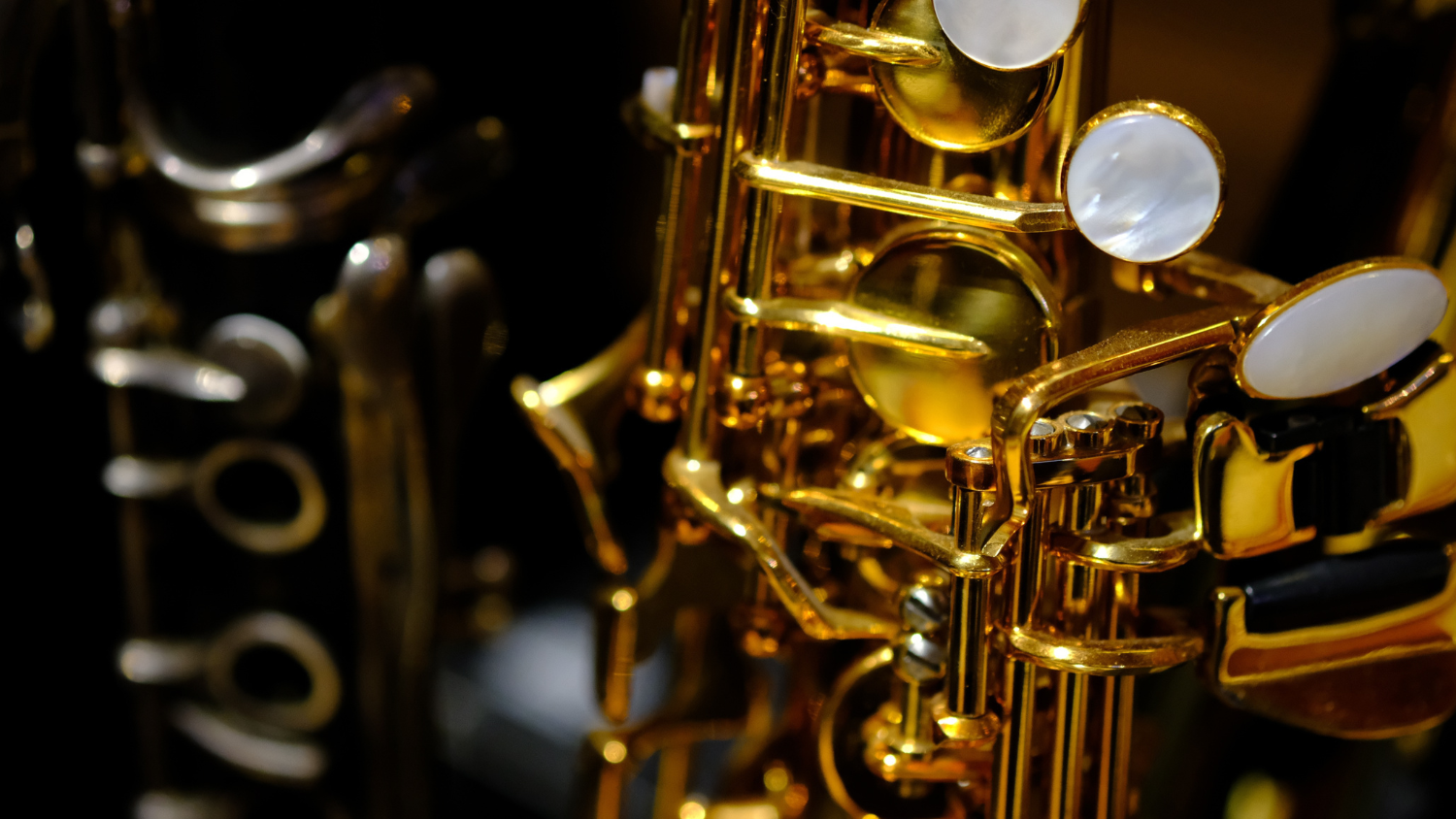It is my basic assumption that you will be teaching this concept to several elementary (or at least beginning) students at one time. I also assume that right now you have a flute (in its case) in front of you and that you will follow along step by step to carefully learn this concept.
THE HEAD JOINT
Do NOT put the flute together yet! Have each student pick up only the head joint, and holding it with both hands, place the embouchure plate securely in the natural indentation of the jaw. Ask the student to be sure he feels the lower lip covering 1/4 to 1/3 of the embouchure hole. If not, move up and down as necessary to achieve this feeling.
FORMING THE EMBOUCHURE
Now, demonstrate, using your own facial expression, by making a silent “WHEE”. Ask each student to do so. This should pull the corners of the lips outward and flatten the lower lip which is resting on/over the embouchure hole. Immediately ask the student to add a “too” following the “Whee”. WHEE-TOO should (1) set the embouchure and (2) give the feeling of properly starting the first tone.
THE FIRST TONE
Discuss the theory that air will be directed INTO the hole, NOT ACROSS it. The more directly the air goes into the hole, the more likely a clear and pleasing sound will result. Use the airstream as a pointer towards a spot on the back wall inside of the embouchure hole. (You can point to this area from the outside.) I call this FOCUS and use that term from beginners on. Only with FOCUS can a beautiful flute tone result. Take a deep breath. Re-form the embouchure (Whee) and blow (too). Demonstrate and ask each student to produce a tone. It should be A2 (second space A).
Testing each student you will encounter one of five predictable results:
- #1–CORRECT RESULT More often than not, a reasonable tone results. Imitation of your tone and pitch will be automatically attempted. When it happens, it produces A2 and should sound like this:
- EXAMPLE #2–NO TONE, RUSHING AIR Air is going across, not INTO the hole.
- EXAMPLE #3–SOME SOUND-MUCH AIR Air is rushing over as well as into hole (splitting the tone) and out the sides of the lips. “Whee” embouchure is not being maintained.
- EXAMPLE #4a–WHOOF SOUND No tongue (Too) has been used to push air out. Eject air with tongue on roof behind teeth – “too” part of embouchure.
- EXAMPLE #4b–THU SOUND Tongue going between teeth and, sometimes, lips.
- EXAMPLE #5a–HIGH PITCHED WHISTLE Blowing much too hard. Blow less and more directly into the hole. Headjoint rolled in too far, causing the hole to be covered too much.
- EXAMPLE #5b–FLAT SOUNDING A2 Headjoint rolled “in” too far; hole covered too much.
FLUTE BODY ASSEMBLY
Now, having tried to blow a sound using only the head joint, it is time to put the flute together (not too difficult to do) and hold it correctly (very difficult to do). Students will not have much problem putting (1) the head joint into the body and (2) adding the foot joint. (If joints are tight, lubricate them by rubbing on some graphite from a soft lead pencil or wash clean with a little soap and water. DO NOT use grease on flute joints.) A few reminders: 1. Avoid hand pressure on rod or keys. 2. Line embouchure hole up with first two keys on body. 3. Line foot joint up by having the key rod in center of last key on the body piece.
FIRST TONE AGAIN
Holding the flute securely with both hands, (left hand around the upper section of the flute body with no keys down and no attempt to achieve proper hand position) go completely through THE FIRST TONE steps again. Note produced should now be third space C#.
HOLDING THE FLUTE
This is often the hardest part of the first or second lesson. Take time to work carefully with each individual so that correct hand position begins at once. Use a mirror so student can “see” without moving flute out of position. Use four points of suspension…the lips (& chin), the first finger of the left hand, the right thumb and the right little finger. Correct placement of the right hand is crucial and often ignored. Watch the right thumb! If the thumb goes too far forward under the flute, the wrist drops. Try placing the fingers of the right hand on the key without the thumb touching the flute. Next, add the thumb to the side of the flute so that it braces up the hand rather than holds up the instrument.
FIRST PITCHES
There are three pitches best learned on the flute in the beginning stages because they can be produced easily and they assist the student in learning to hold the instrument properly: Third line B natural, second space A, second line G. Review again the “Whee- too” embouchure. Learn these three notes. When they can be successfully played, you are ready to begin in a method book, preferably one designed specifically for flutes instead of the usual band method books.







